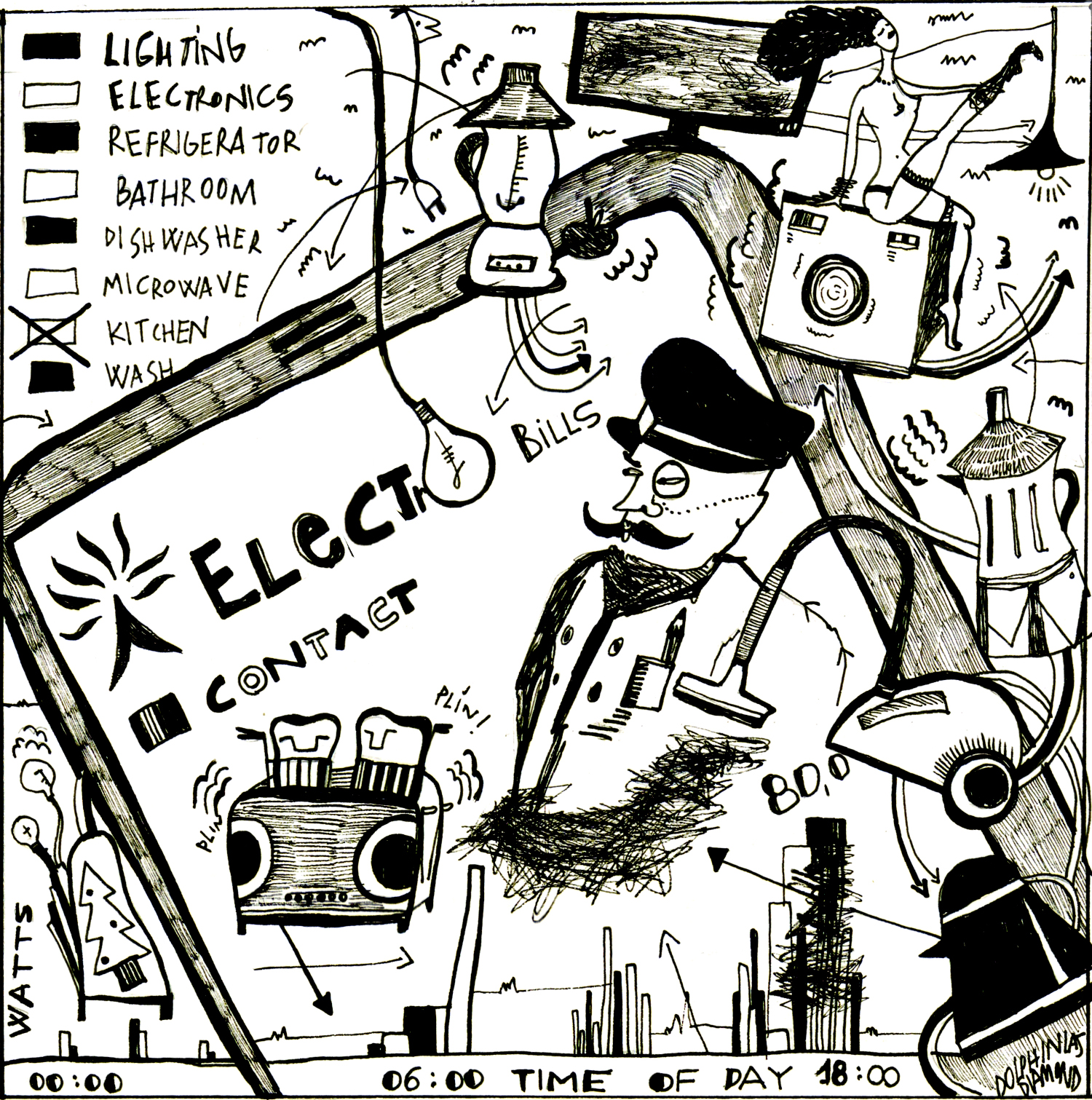When it comes to energy conservation, much is in the hand of power consumers…
By changing inefficient behavior and/or appliances, they can potentially reduce their energy consumption, but also avoid carbon-intensive on-peak production and eventually offset costly grid investments.
But how to motivate them in doing so? We already know that one way of engaging power users is via frequent information feedback on their consumption (conservation effect from feedback alone is in the range of 3-5%). Real-time feedback for certain appliances is now a viable and affordable option, thanks to the increasing deployment of smart meters, i.e. electronic devices that record consumption of electric energy sub-hourly for monitoring and billing purposes. But providing to consumers a detailed account of all electricity usage broken into major appliances, i.e. via disaggregation, is still much more difficult, even if it has been shown to potentially increase efficient behaviours.
Bill disaggregation systems appeared in the 1990s, when utilities started doing audits to collect data on demographics, appliances, premises and occupants of households. This information was used to build predictive behavioral models, which combined monthly billing records with household-specific information to create a detailed and disaggregated portrayal of where electricity was used and the cost associated with that usage over time.
Neenan et al. reviewed two studies in 2009 focusing on the effects of bill reports with estimated disaggregated usage based on static information of household composition equipment for around 150 participants. The average reduction impact on consumption was 4%, apparently in line with the ones observed with aggregated feedbacks. Such low effect may be due to the poor accuracy of disaggregation estimates when based solely on static survey informations. Furthermore, the burden of data collection involved in such audits made these approaches less popular than other simpler information feedback mechanisms.
A more straightforward approach would be to simply install a meter for each appliance to provide optimal disaggregation accuracy, but this is today still too costly for large-scale adoption, as well as too impractical and cumbersome for the user to install and/or manage.
A promising solution between the inaccurate survey-based and the invasive per-appliance-meter approach is the so called non-intrusive appliance load monitoring, NILM for friends. The aim is to recover the consumption levels of each appliances thanks to their aggregated high-frequency energy load signal. The concept was introduced by Hart in 1992, but his preliminary algorithm was limited, especially when dealing with multiple modes of operation of a device or multiple concurrent devices. Since then, significant progress have been done, both on the theoretical side with improvements of the algorithms, and on the empirical one by collecting an increasing number of data for testing and calibration.
Today, state-of-the-art algorithms span different techniques and disciplines, ranging from machine learning and artificial neural networks to optimization and sparse coding. Its research community is quite active and is of much interest also for the business world, as testified for example by a recent remunerative competition. A crucial input in these algorithms is the electric signature of the appliances to be identified. The proliferation of free datasets with appliance-level power usage data from several homes around the world – along with the efforts of the open-source community to provide a toolkit for calibrating, testing and comparing available NILM algorithms – make the experimentation in this field much more accessible than before.
Given the increasing availability of high-frequency data due to residential smart meters, NILM algorithmic progress opens up the possibility of information feedback systems with unprecedented detail and insights on energy consumption. But the question remains: will this additional information really empower the user and promote energy-efficient behaviors?
Only few experiments to date have explicitly addressed the behavioral change potential of disaggregated energy use feedback using high-frequency consumption data. The four experimental studies reviewed by Karlin et al. in 2015 involve at most 100 households but encouraging conservation effects in the range between 10% and 20% are found. This range widens to 0-38% in a more recent review undertaken by Kelly in 2016. This review highlights however how all available studies suffer from at least one important experimental design problem, may it be limited sample size, or limited duration, or the absence of a control group, or the presence of volunteer bias, or the lack of control for potentially confounding factors like weather or the Hawthorne effect.
Unfortunately, the huge swing in results prevents from any sound conclusion on the real effect of disaggregated data real-time feedback to the consumer. The lack of large-scale structured experiments and the relevance of their much needed robust output highlight a potential venue for further research, which the COBHAM team is willing to explore.

